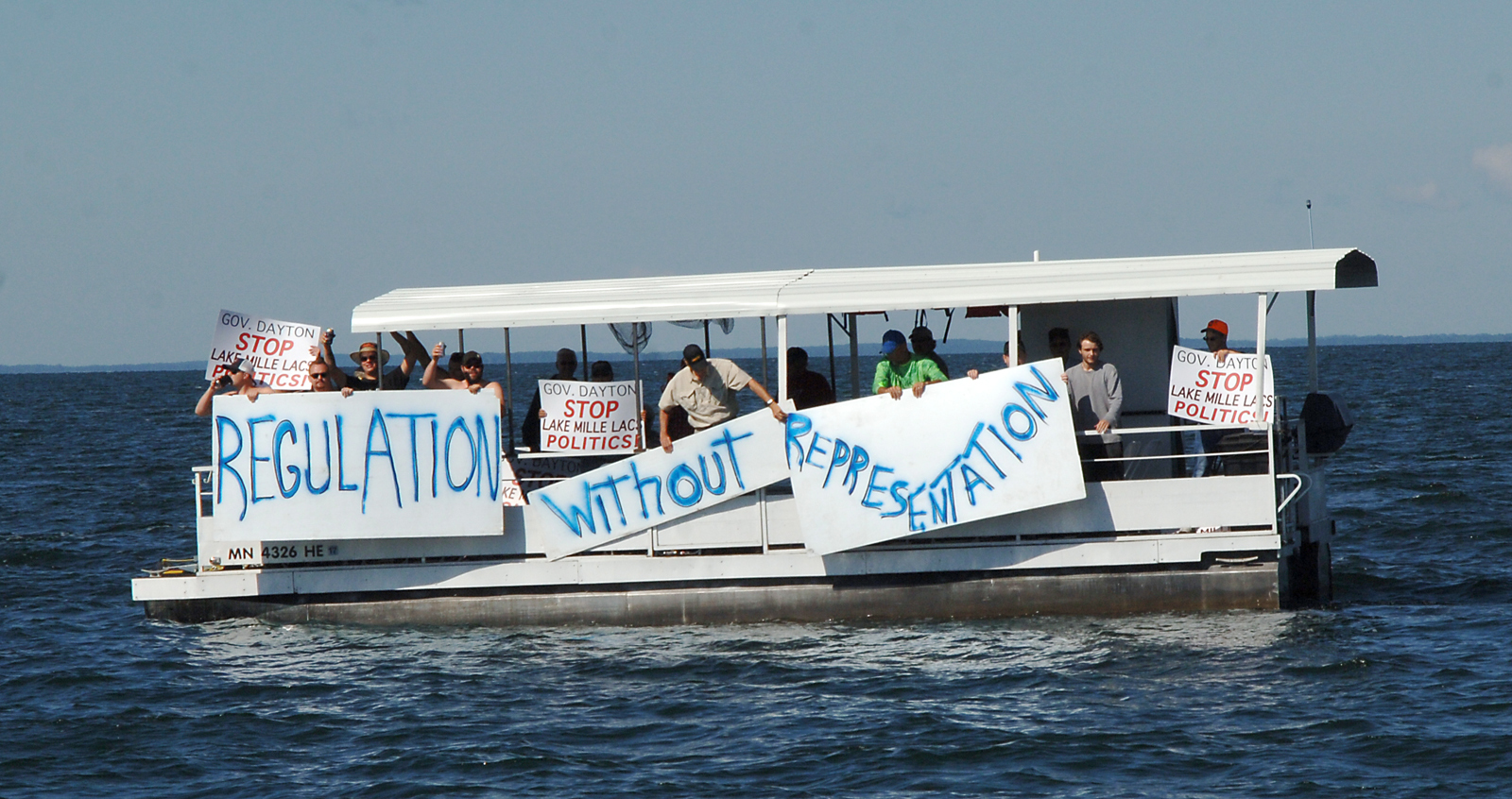
The lesson from last weekend’s protest on Lake Mille Lacs may be that protest works. Or does it?
A flotilla of fisherpeople and area business owners encircled Gov. Mark Dayton’s boat, protesting restrictions on the taking of walleye.
Today, the Star Tribune is reporting the governor seemed to be having second thoughts on the Minnesota Department of Natural Resources restrictions that have angered the locals.
The state Department of Natural Resources will sample the walleye population this fall, Dayton said Monday. If the fish are thriving, as critics of the restrictions say they seem to be, the state would revisit its regulations and catch limits on the popular lake.
Don’t get your hopes up. There’s less here than meets the eye.
The plan all along has been that an independent group will study the lake in the fall. The results, however, could take six to nine months to determine, MPR News reported last week.
The lake is closed for walleye fishing until July 27. State officials have been pushing bass fishing as an alternative, but this is a walleye lake above all else.
“Our goal is to have the longest fishing season possible while ensuring the conservation of the lake’s future walleye spawning stock,” said DNR Commissioner Tom Landwehr when he announced the restrictions in March. “We understand catch and release is a difficult option for anglers who enjoy a fish meal, but we are using everything in our management toolbox to ensure a healthy and plentiful walleye population for future fishing seasons.”
“I point the finger directly back to this whole co-management system to basically micromanage a few thousand pounds of fish,” boat dealer Eddy Lyback tells the paper. “It’s just not working.”
If the walleye population is coming back, doesn’t that prove it is?
“Based on what people are seeing and how they’re biting, there are a lot of walleyes out there,” he tells the paper, saying the people who live around the lake know a lot more than the scientists who survey the population.
But Brad Parsons, central region fisheries manager for the DNR, told MPR News reporter Kirsti Marohn last week there may be a good reason why it seems that way.
“Fishing pressure is lower on Mille Lacs than it has been in the past,” Parsons said. “So you have fewer people going for the same number of fish that are willing to bite at any given time.”
About that bass thing: Lyback suggests the person who fishes for bass is a poor substitute for the walleye fan. Bass people don’t buy stuff and they don’t stay in the area long enough to support the local businesses, he says.
A month ago, the locals created a petition on WhiteHouse.gov to end bilateral management of the lake:
Because of closed season netting by Sovereign Ojibwe and MN DNR regulations, the tourism and angler’s right to fish are being denied the region that is dependent on tourist dollars to survive. All administrative remedies have been exhausted.
The region is losing it’s appeal to fishermen that can only shake their heads at the inconclusive measures that so-called “treaty” management has done to this premier walleye destination.
The Sovereign Nation of Ojibwe claims it has the “right” to decimate the lake to take as many fish as it can take and dictate how many fish everyone else can have. This is beyond their “sovereign” discretion. We aren’t allowed to take any fish as a result. There is a plentiful population of walleye in the lake, yet they would deny anglers the right to fish.
These sort of petitions need 100,000 “signatures” to get a response from the Trump administration. It’s still short by 99,074.
